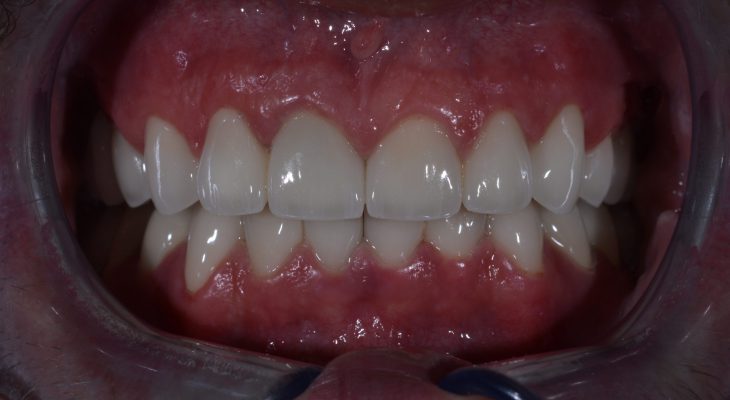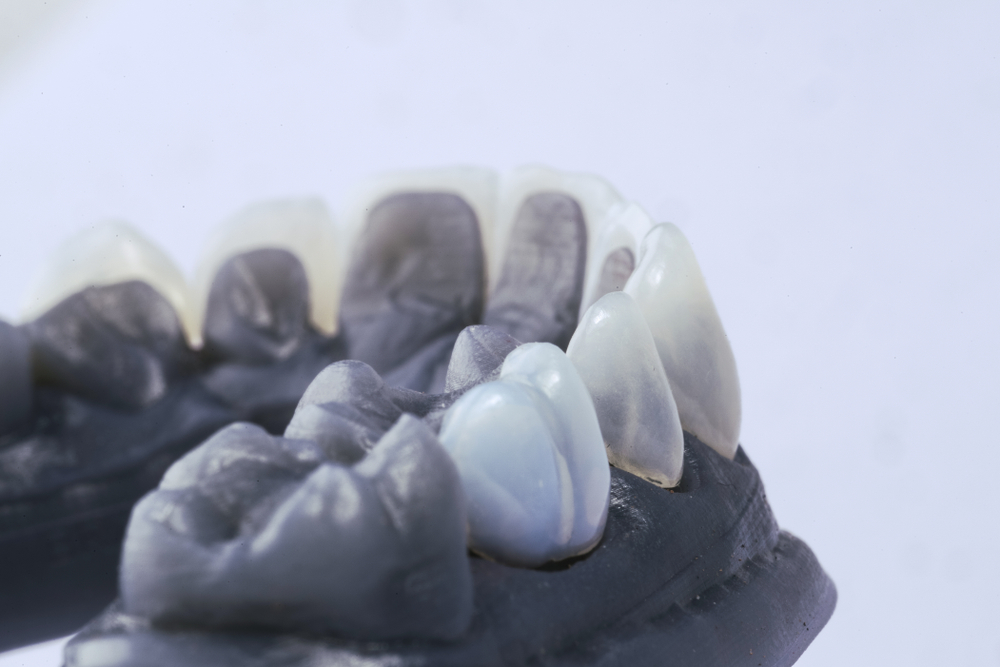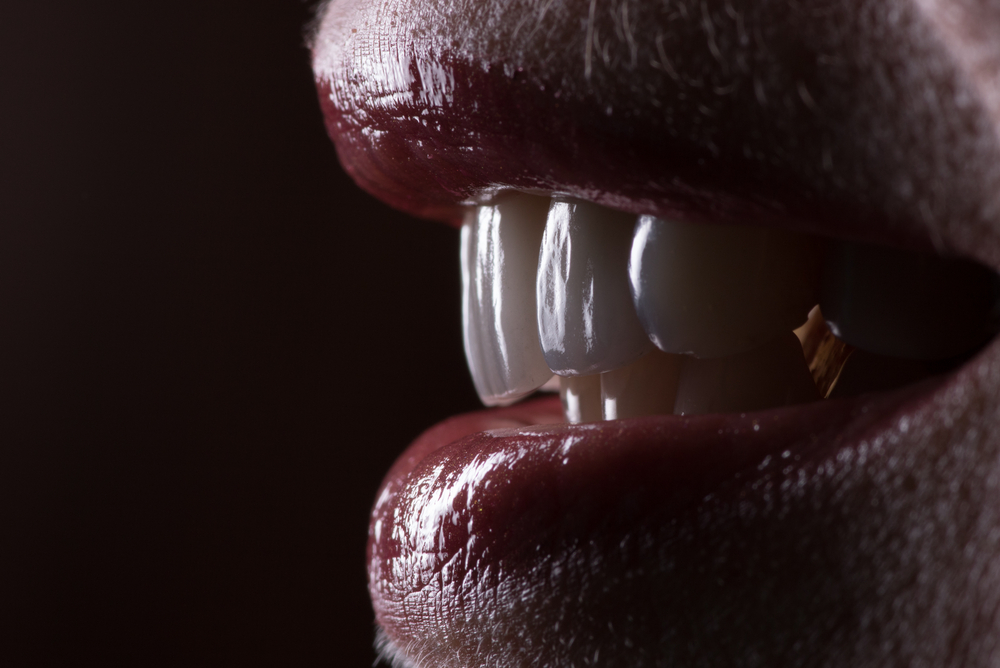1. What are dental veneers?
What are dental veneers?
A dental veneer is a thin shell covering the frontal surface of the teeth that can be used to correct and modify the shape and color of the teeth.
We use dental veneers mainly for aesthetic purposes. Nonetheless, the procedure might involve shaving down the teeth to a minimal extent, the result is very durable and aesthetically pleasing. They can be made of ceramic, or zirconium. In case of direct veneers, we use composite filling materials.
When using a direct veneer, the dentist builds up thin layers of composite filling material on the front surface of the teeth in order to achieve the most natural look.
In case of indirect veneers, we make an impression of the teeth that is sent to the dental laboratory where the veneer is made afterwards. The veneer is then glued to the surface of the teeth with a specific cement.
2. When do we recommend using dental veneers?
Generically speaking, dental veneers are used for aesthetic purposes. We can alter the color as well as the shape of the frontal teeth line. The perfectly looking “Hollywood smile” that most people dream of is usually achieved by using veneers.
3. What results can be obtained with veneers?
Dental veneers are often the ideal aesthetic solution to compensate for discoloration of the teeth, fill in an excessive interdental space, hide imperfections or cracks in your teeth. The „perfect Hollywood smile” is in most cases easily achievable, but there is a few dental problems to which veneers only offer a partial solution.
Every case is different and specific, and each patient has various expectations. Due to this fact, it is highly important to conduct an in-depth planning beforehand and inform our patients about the results they can expect. We prefer to design and make a laboratory prototype of the veneers before applying them on the patient. The advantage of the initial prototype is that we can try and see how it fits on the individual and how it will change the final outlook of his/her teeth.
Making a prototype involves minimum costs, and with the help of it we avoid any possible inconveniences for the patient as well as the doctor at a later stage of the treatment. If the prototype is not fully sufficient, we can still modify it to meet individual expectations.
4. When to avoid veneers
- clenching or grinding of the teeth at night
- poor oral hygene
- significant bite deviations
- making metal-free crowns is a better solution for severely damaged, former teeth with large fillings
- we recommend metal-free crowns for teeth undergone root-treatment
Porcelain veneers are fairly thin structures, covering the outer surface of the teeth. Because they attach to teeth in a relatively small area, it is important that they are strongly fixed to the enamel over its entire surface. In case of gluing to enamel, the patient cannot have deeper caries or larger fillings. It is also important that the veneers are not subjected to increased chewing force, as they can break relatively easily.
5. What types of veneers are available?
a, based on the technique of preparation of the teeth:
We distinguish between prep and non-prep veneers. In case of non-prep veneers, we do not shave off from the teeth. The dentist glues / builds the veneer directly onto the outer surface of the tooth after polishing it. As attractive as they might appear, we do not recommend non-prep veneers and we do not use them in our dental clinic.
We talk about prep veneers if the application of the veneer is preceded by shaving off some tooth material. During the preparation the dentist removes a thin layer from the outer surface of the enamel. This prevents the development of caries. At this point, it is possible to correct the shape of any protruding, out-of-arch and irregular teeth. It is important to emphasize that only minimal dental material is to be removed.
b, based on the technology of the veneers:
- direct veneers: filling material is layered on the outer surface of the tooth without making an impression. It usually requires only a single appointment during which our dentist builds the outer surface of the tooth from thin layers of filler, changing its colour and shape.
- indirect veneers: they are designed based on an imprint and usually two appointments are required to complete the treatment. For the first time, the dentist takes a digital or traditional impression. Based on the imprint, the veneer is made in the dental laboratory. The final veneer is then glued to the surface of the tooth.
c, based on the material of the veneers:
- Ceramic veneers (or porcelain veneers): ceramic veneers are glued to the outer surface of the tooth. Ceramic / porcelain veneers can be used to achieve the most aesthetic, natural results, and are also the best choice in terms of durability. The transparency of the ceramic is the most similar to the properties of the tooth, so they provide a perfect aesthetic result.
- Composite veneers: they can be made directly or indirectly. When applying direct veneers, the dentist builds thin layers of composite filling material directly on the outer surface of the tooth. Indirect composite veneers are made of modified composite material in the dental laboratory. Composite veneers are less durable than the ceramic ones.
- Zirconium veneers: although zirconium is a material of extreme hardness, its transparency is not as good as of ceramics, thus they are not widespread.
If you want a long-term, durable and aesthetically perfect solution, we advise you to opt for a porcelain veneer.
Get an appointment now!6. The treatment step by step
- The preparation of the teeth for the veneer is always preceded by a consultation, a thorough oral examination and an X-ray.
During the first appointment our dentist can judge whether a veneer is the ideal solution for you. We assess your bite (in case of a deep bite the veneer is no option), signs of grinding and oral hygiene. In addition, it is important to discuss what changes can be achieved and what your expectations are.
- The oral examination is followed by the the design of the final shape of the porcelain veneer. During digital planning, our dentist makes a digital impression, and its data is sent to the dental laboratory where a prototype is made with a 3D printer. The whole process can happen of course using traditional methods as well.
- When the prototype is ready, you can try and test it on your teeth so you can see the changes it brings about. You can even wear it for several days. If you are not satisfied with the changes, the prototype can be further corrected. If you are satisfied with the prototype, our dentist will prepare your teeth for the final ceramic veneers.
- Based on the protype, our dental technician makes the E-max veneers, which are cemented to your teeth during the next treatment.
If for some reason you are not satisfied with the finished veneers, there is of course a possibility to correct them.
If both you and your dentist are satisfied with the finished veneers, the final fixing will take place.
After fixing the porcelain veneers, you may experience some sensitivity to cold or warm temperatures, but it completely disappears in a few days.
7. How to clean veneers?
The care and cleaning of veneers does not require extra tools, it can be done perfectly with the regular tools of oral care. They are fixed one by one on the outer surface of the teeth, so the spaces between the teeth should be treated with dental floss or an interdental brush, while their surfaces should be treated with a toothbrush and toothpaste at least 2 times a day. It is important however that you attend regular check-ups at your dentist, ideally every six months.








